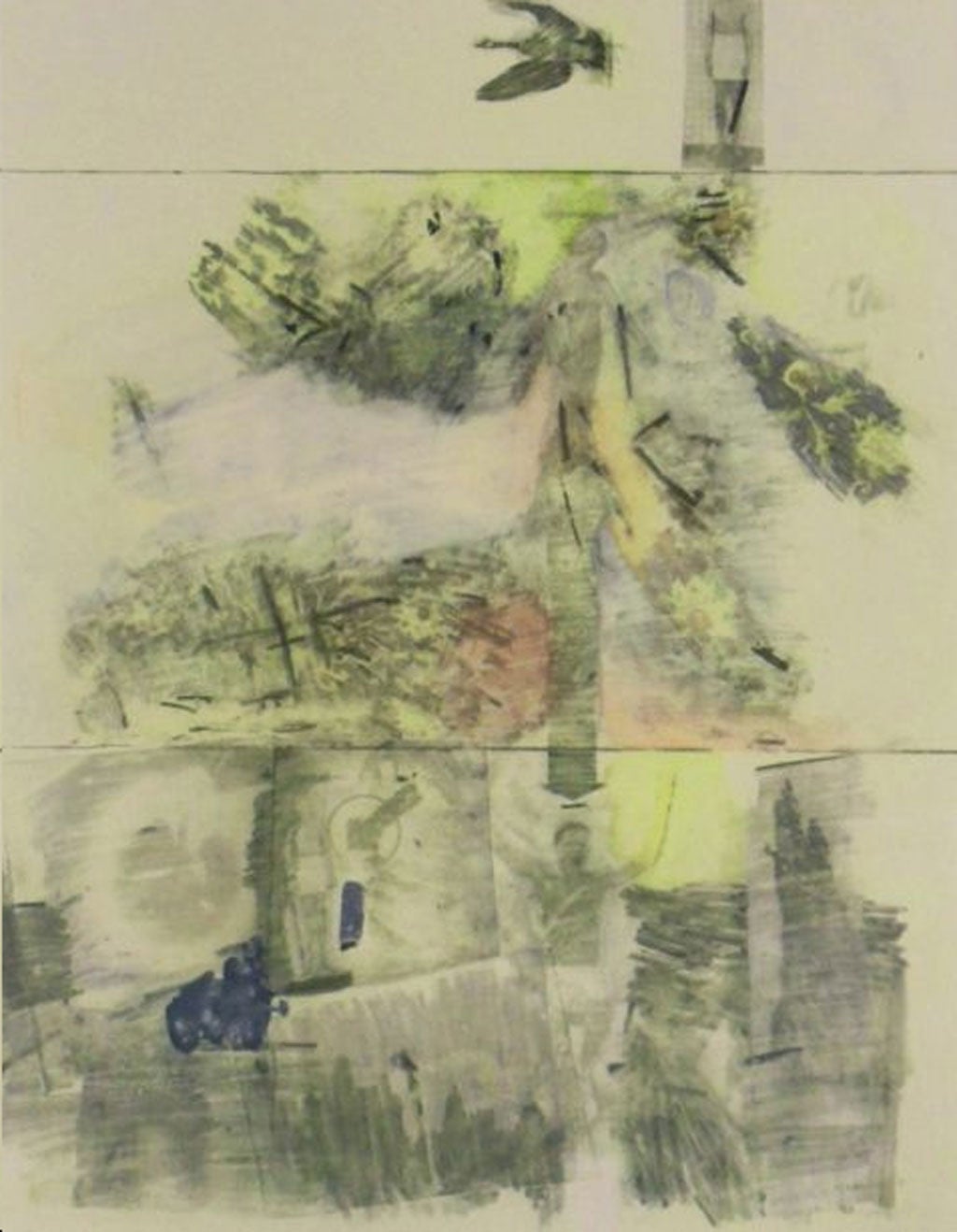Charles Darwent on Rauschenberg, XXXIV Drawings for Dante's 'Inferno': Bath-house tales that scrub up nicely
Illustrating a literary masterpiece, Robert Rauschenberg converts mass produced images into fragile artworks

Other literary works must have had the impact on artists of The Divine Comedy, although, Shakespeare and the Bible apart, I can not think of one offhand. A quick jog through art history throws up illustrations to Dante's three-part poem by Giovanni di Paulo, Botticelli and Gustave Doré; Rodin sculpted it, Blake was busy painting watercolours from it when he died.
Modern artists such as Salvador Dalí have traced the footsteps of Virgil and Beatrice through "Inferno" and "Purgatorio" to "Paradiso", although Robert Rauschenberg, never big on redemption, skipped the last two and stayed in the first.
If the "Inferno" hadn't existed, then Rauschenberg (1925-2008) would have been the man to invent it. For anyone born post-1900, Dante's Hell, Purgatory and Heaven bear a notable resemblance to the id, ego and super-ego of the tripartite Freudian mind. The young Rauschenberg, taught painting at Black Mountain College by the strict Bauhaus abstractionist Josef Albers, came to see Modernist art as a variant of his Texan parents' fundamental Christianity. In the late 1950s, he would set about redefining it in his own, flawed image.
As a closeted gay man in that homophobic decade – married and quickly divorced, he had affairs with Cy Twombly and Jasper Johns – Rauschenberg knew that sexual love and damnation were indissolubly intertwined: no Beatrice was going to lead him to salvation. So Hell was what he chose to depict, in a series of drawings of the 34 cantos of "Inferno" made between 1958 and 1960 – images that were as far from Albers and Baptist Texas as it was possible, then, to go.
First, there was the question of method. The works in a show at the A&D Gallery, a small space in a newly arted-up Marylebone street in central London, are lithographs of Rauschenberg's drawings rather than the drawings themselves. (The originals, now fragile and hugely valuable, are in the Museum of Modern Art in New York.) This extra layer of making adds to, rather than detracts from the images, their story being, at heart, one of veils looked through rather than drawn.
If Albers had preached the gospel of meticulousness in art, then Rauschenberg would go for its opposite. The "Inferno" drawings look scruffy, the kind of thing anyone could do. And, to an extent, they are: the images were made by placing scraps cut from newspapers and magazines on background paper, pouring (rather clumsily) a solvent on to them and then transferring the dried image by scoring it with the tip of an empty ballpoint pen, rather like those coin-and-pencil rubbings children do.
The end result is certainly demotic, but it is more than that. The scratchy surface of Rauschenberg's drawings and prints may combine abstract Expressionism with Dada and early Pop, but they own up to the flawed nature of the human hand, of humanity itself. They are innocent, but in a guilty way.
The portrait-format images also look like rooms, and I wonder if there isn't something of the gay bath-house to them? If Dante had peopled his inferno with the usual Christian suspects – the lying, the disloyal and self-interested, spoiled sons of the ill-gotten rich – then Rauschenberg's Hell is specifically homoerotic.
Through the mists of his hatching emerge figures from mythology and his own sexual fantasy, Dante rewritten by Tom of Finland. In Canto II, The Descent into Hell, in roughly half of the drawngs, Dante himself leans on a wall wearing white boxer shorts. He is joined by steam-room stereotypes: wrestlers, weightlifters, men in suits, the bearded Eugenius.
As in The Divine Comedy, there is something ridiculous about all of this, something bleakly amusing. In Canto XXI, corrupt politicians are boiled in a river of tar, goaded into it with pitchforks by demons called the malebranche, or "evil-claws". As Dante and Virgil pass by, these fart loudly – del cul fatto trombetta, "made trumpets of their arses", as Dante says. Rauschenberg, entering into the spirit of the game, has his malebranche wear gas masks.
In Canto XIV, The Third Ring of the Seventh Circle, Dante finds naked sinners condemned to walk for eternity on burning sand. Rauschenberg, in a quiet in-joke, traces his own foot in red crayon. The occupants of this particular sub-hell are the Violent Against Art.
For all that, what marks the "Inferno" drawings as great is not their humour or even their place in art history, but their empathy with pain and instinctive feel for obscurity. They are veiled, encoded calls to redeem the time – to turn mass-produced images into hand-drawn artworks, to de-trash trash, to de-demonise human sexuality. Rauschenberg's drawings were doomed to failure on all these counts. Their tragedy (and their strength) lies in the fact that they knew it.
To 28 Sept (aanddgallery.com)
Critic's Choice
Dame Laura Knight recorded the lives of circus folk, ballet dancers, her intellectual circle, Second World War fighters and civilian workers, the Nuremberg trials, and she became the first woman for 167 years to be admitted to the Royal Academy. See how she broke through in Laura Knight: Portraits at the National Portrait Gallery in London (to 13 Oct). Also at the NPG, a few arresting portraits in the annual BP Award – albeit among others less notable – make the free exhibition worth a look (to 15 Sept).
Join our commenting forum
Join thought-provoking conversations, follow other Independent readers and see their replies
Comments